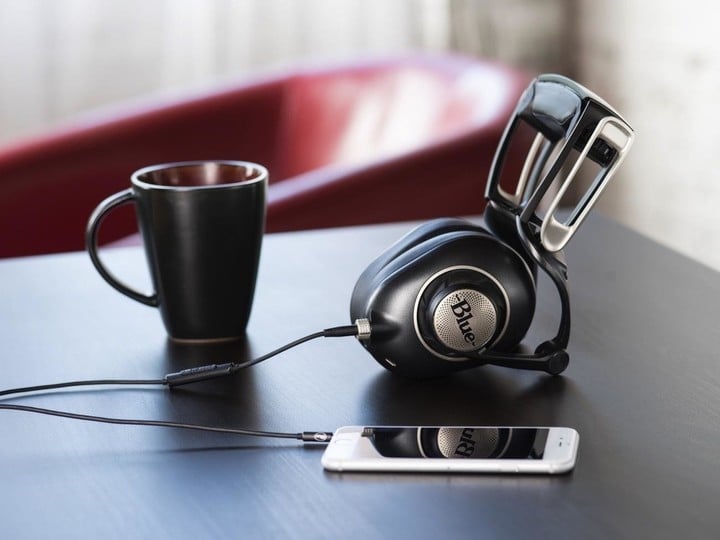
Should You Consider Blue's Ella Planar Magnetic Headphones?
Is it time to consider Blue’s Ella headphones?
When looking for a great studio microphone, many have turned to Blue Microphones, which has been making these type of audio products for over 20 years. In recent months, the California company has been shifting its focus to making headphones.
In this review, you’ll learn more about Ella, Blue’s most expensive pair of headphones to date. In a later review, you’ll hear more about the company’s mid-priced headphone, Sadie.
Blue Ella

Sadie, Ella
Priced at $700, Ella is the first pair of planar magnetic headphones to include a built-in headphone amp. The result is an odd mix of satisfaction and disappointment which I’ll explain here.
My first experience with planar magnetic headphones came in 2016 when I reviewed the still-impressive Audeze SINE. Unlike traditional dynamic headphones that use moving coil drivers, planar magnetic headphones spread the voice coil over a large area. As a result, these drivers can dissipate heat efficiently that would otherwise build up. In doing so, the sound they produce is punchy, dynamic, and detailed.
On this point, Ella offers sound quality at least equal to the SINE, and that’s saying a lot. However, you should consider more than just sound when considering a pair of expensive headphones to buy.
Design
There’s nothing quiet or small about Ella’s look. Everything about it screams “see me.” The headphones, which feature a metal frame that’s modeled after a Formula 1 race car, weigh a hefty 481 grams, or just over a pound. You’ll feel every one of these grams the moment you put the headphones on.
Luckily, Ella has enough padding and foam to make them comfortable despite the weight, at least for a while. After a few hours, I did feel annoying pressure at the top of my head. As someone who wears headphones for hours each day, I found this to be the ultimate deal-breaker.
There’s nothing quiet or small about Ella’s look. Everything about it screams “see me."
The Ella headphones have two ports, both on the left earcup. First, there’s the audio jack which is where you’ll plug in the removable, high-quality braided nylon 1.2-meter audio cable that ships with the device. It features controls for Apple devices and a microphone. You’ll also find a microUSB port to power the amp. The left ear cup also includes a circular switch to turn the amp on and off. You’ll learn more about this under the Sound section in this article.

Ella also ships with a soft carry case, 3-meter audio cable, and 3.5mm to 1/4-inch adaptor.
Sound
Thanks to its internal 250mW audiophile amplifier, Ella gets louder than most headphones. Because of this, be sure to put the volume on the lowest setting, at least when you put the headphones on each time.
Once you find the volume that’s right for you, you’ll notice something extraordinary: Thanks to the amp, you get a more accurate performance, no matter the type of music.
Finding that perfect balance, isn’t easy, however. It requires you to tackle a learning curve that’s only made more difficult by the design chosen for Ella’s amp switch. This switch includes three settings: On, On+, and Off.
The On setting offers detailed, natural sound. Blue Microphones call this the “full Ella experience.” When using the On+ setting, you’ll feel deeper and smoother bass, perfect for those times when your music needs some extra low-end support. Finally, with the amp switch in the Off position, you’ll experience Ella in passive mode. This situation is ideal when other amplification gear is available, like in a studio, or when the battery on the Ella has become exhausted.
The amp switch includes markings for each setting. Unfortunately, the print is difficult to see. In time, I would suspect the print will fade.
About that Battery
When Ella’s amp switch is in the On or On+ position, and there’s no sound, you’ll obviously know the amp battery needs recharging.
Glowing lights on Ella’s earcups tell you the battery’s current status.
When the amp battery’s fully charged, Ella’s earcups offer a solid glow. This changes to a fast pulsing light when charging is necessary. (You’ll see a slow pulsing glow when the battery’s charging.)
The problem with this alert system is two-fold.
For one, you obviously can’t see the glowing lights when you’re wearing the headphones. Second, the lights only show when the headphones are in the open position. When not in use, the headphones are closed by default.
Though the lights for the alerts do look nice (see for yourself using a mirror), a better approach might have been to add an audio alert instead. As it stands, the alert system is thisclose to being gimmicky, which isn’t a good place to be for a $700 pair of headphones.
Finding that perfect balance, isn't easy, however. It requires you to tackle a learning curve that’s only made more difficult by the design chosen for Ella’s amp switch.
Let’s end this section on a positive note.
When Ella’s ear cups are closed, the sound automatically turns off, only to return when you put them back on. This is a great feature that I’d love see repeated on other audio products.
The Choice
Are the Ella headphones worth considering? Absolutely, if you’re planning on using them in a studio. However, I’m less inclined to endorse them for everyday home use. Despite offering fantastic sounds, Ella’s design could easily turn off many users because of its bulkiness and confusing amp battery alert system.
If you’re looking for planar magnetic headphones, I still recommend the Audeze SINE. These headphones offer terrific sound within a design that’s a lot less confusing. You’ll also save yourself $100.

- Exceptional sound thanks to its built-in 250mW audiophile amplifier
- Advanced planar magnetic technology for uncompromising clarity and detail
- Custom double-sided 50mm x 50mm drivers deliver incredible accuracy
- Closed-back design for immersive isolation